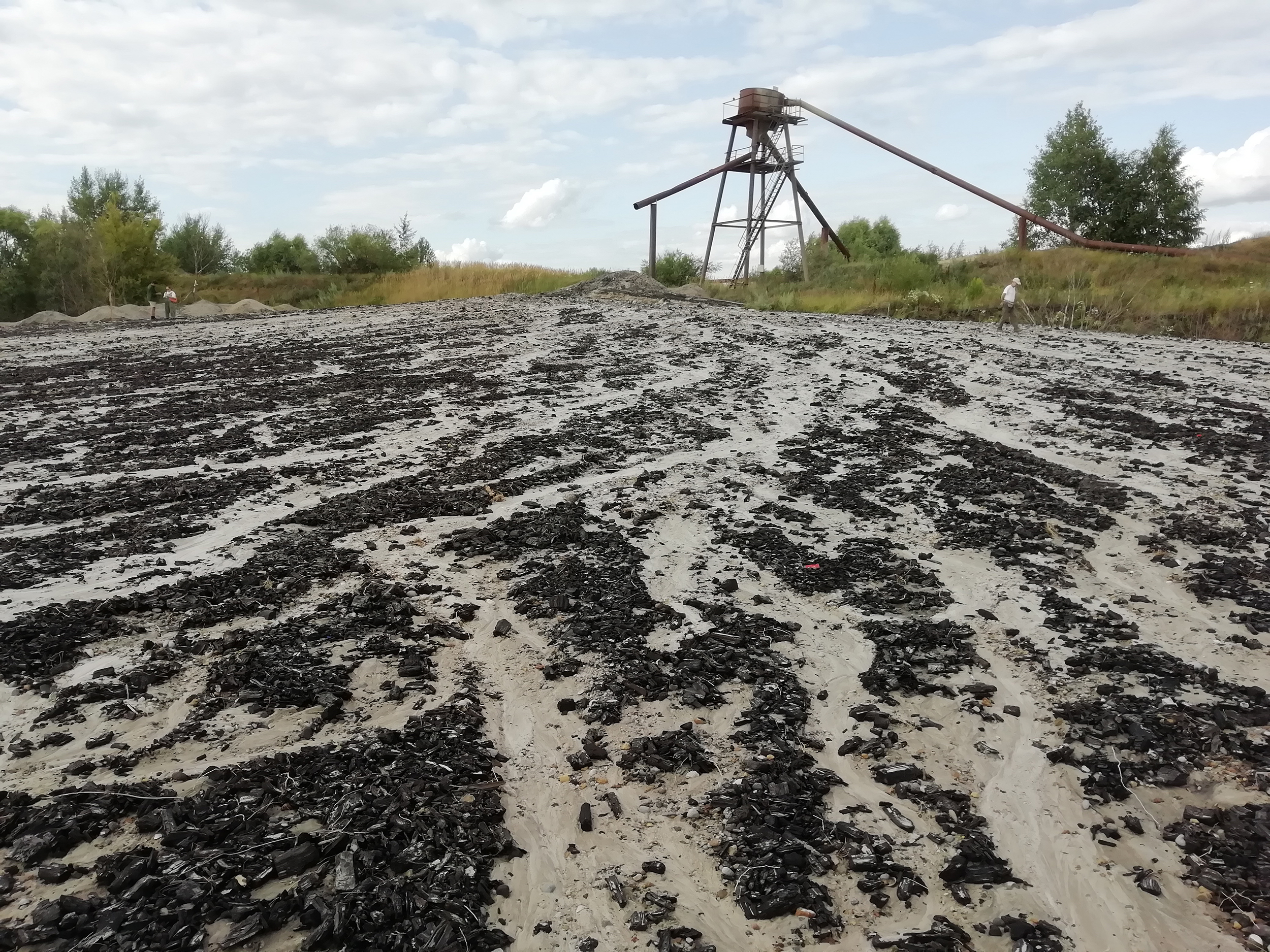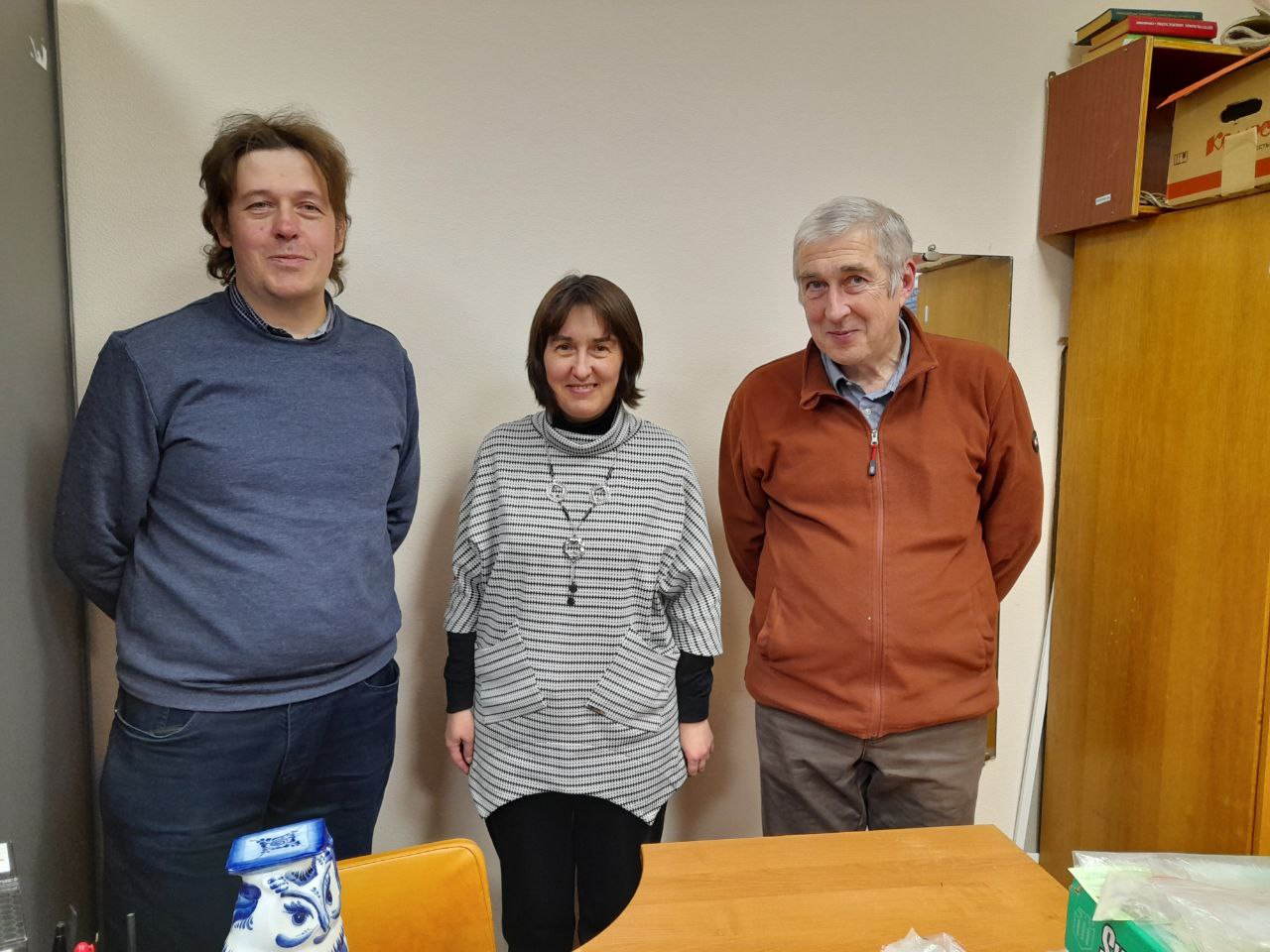By replacing wood in fossilised trunks, mineral pyrite becomes ordered
News, 03 July 2024
For the first time in the world, scientists from the Laboratory of Neutron Physics at JINR and the Borissiak Palaeontological Institute (PIN) of the Russian Academy of Sciences (RAS) found out that when pyrite (FeS2) replaces organic matter in fossilised wood, the crystallographic texture of the mineral becomes sharper. In other words, pyrite crystals acquire preferred orientations in the entire volume. One of the goals of the study was to understand the mechanisms of biomineralisation, the process by which living organisms produce mineral skeletons. In addition, developing this research area may lead to the creation of nature-like materials in the long term. Scientists suggested that in the future, it would be possible to grow crystals in specified directions using an organic basis, which will allow planning the properties of the material.
“These trees “saw” dinosaurs”
The samples for research, fossil tree fragments, were found in a sand quarry in the Oryol Region of the Russian Federation. The co-author of the study, a senior researcher at PIN RAS and FLNP at JINR Alexey Pakhnevich noted that Russian palaeontologists find trees of past geological eras in quarries in the Moscow, Kaluga, Tula Regions, and in the Caucasus. During the Mesozoic, an ancient ocean stretched across what we now know as regions near Moscow. It completely retreated by the middle of the Cretaceous Period. The wood would have quickly decomposed in the air, but marine bottom sediments preserved it. The scientist explained the mechanism of the occurrence of stone remains: “Fragments of trees fell from the shore into the sea, and since the wood does not sink, the current could carry them for many kilometres”.
 The studied samples of petrified wood replaced by pyrite. Photo © Sergey Bagirov
The studied samples of petrified wood replaced by pyrite. Photo © Sergey Bagirov
The samples for this particular study are about 163 million years old. They were contemporaries of dinosaurs. Ancient tree fragments are found in two different forms, either solid charred fragments that easily crumble in the open air upon losing moisture or fossilised, durable ones, replaced by minerals. All fossilised tree fragments have one common feature: their chemical composition is completely different, yet the form remains intact down to the smallest veins and wormholes. “Natural polymers such as cellulose, lignin, and sporopollenin are often fossilised. This is why some plant remains are well preserved, almost unchanged for millions of years; for example, wood. In other cases, it can be charred, that is, a significant part of the organic matter turns into carbon or wood is replaced by minerals,” the team of scientists comments.
 A sand quarry with numerous samples of charred wood. Photo © Alexey Pakhnevich
A sand quarry with numerous samples of charred wood. Photo © Alexey Pakhnevich
Many minerals replace ancient organic matter. For example, there are fossils replaced by quartz and silicon oxide. Jewellery is created from malachite and opal cuttings of petrified trees worldwide. Palaeontologists often find samples of fossil trees replaced by pyrite (FeS2 sulphur or iron pyrite). Due to its yellow colour and lustre, prospectors confused this mineral with gold during the gold rushes, which is why it received the unofficial name “fool’s gold”. Pyrite, however, is not suitable for jewellery: it smells of sulphur and oxidises in the air. In industry, pyrite is the basis for the production of sulphuric acid.
From a non-crystalline material to a polycrystal
In a quarry in the Oryol Region, scientists collected not only pyritised wood, but also pyrite nodules of the same geological age, spherical formations consisting almost entirely of a single mineral. The researchers compared the orientations of pyrite grains in fossils and nodules using time-of-flight neutron diffraction at the SKAT Facility at the IBR-2 Reactor. The auxiliary methods used in the study are electron microscopy, X-ray tomography, and elemental microanalysis of the samples.
“We examined two options of the growth of pyrite crystals. We compared how crystals grew in nodules and in wood. According to the measurement results, there are differences. We found that crystals are more strictly oriented in wood than in nodules,” Alexey Pakhnevich said. He explained that the nodules from pyrite were preliminarily examined on a tomograph and found to have no large inclusions from the tree, since the nodule was not attached to any biological object as it grew. On the contrary, in wood, the mineral began to grow not randomly, but on a given structure, a matrix. Wood consists entirely of organic substances, mostly cellulose, which pyrite gradually replaces. “In theory, a mineral can grow in any way, because crystals can be oriented in all directions. But in fact, it turned out that the organic matrix has some indirect influence on crystal growth,” the scientist added.
 The SKAT Facility. On the left is Dmitry Nikolaev
The SKAT Facility. On the left is Dmitry Nikolaev
“When one crystal is replaced by another, the starting crystal has preferred directions, so it is expected that the replacement crystal will be oriented the same way. But when wood, a non-crystalline starting material, still sets preferred directions in crystals, that is very unusual,” co-author of the study, a FLNP JINR senior researcher Dmitry Nikolaev said.
New materials
According to scientists, the fact that mineral crystals replacing fossil wood are more ordered than the same crystals in nodules confirms the idea that in the distant future, it will be possible to use an organic matrix to grow crystals in specified directions, planning the properties of innovative materials. “We’re showing that it is possible to move towards the creation of new materials based on an organic matrix. It could take decades, but this is a possible and promising option,” Dmitry Nikolaev says.
Biomineralisation
Scientists from FLNP and PIN RAS intend to continue research on the crystallographic texture and other minerals of different geological ages that replace wood. All of them are formed under different conditions, have a different shape of the crystal lattice, and the result may not coincide with that obtained for pyrite. In addition, the team of scientists studies other palaeontological and biological objects, particularly shells of modern and fossil molluscs. “The object of all our research is crystallographic texture studied on the example of biological samples. We determine its stability or variability depending on the sample, as well as the boundaries of this variability,” Dmitry Nikolaev explained. Such research helps to understand the process of biomineralisation, the formation of skeletons or shells in living organisms. “Crystal orientations in biological objects are sometimes even more ordered than in some metals. It takes humans using a certain temperature and pressure to obtain a material with specified properties and a given orientation of crystals. But a mollusc, such as a mussel, simply grows its shell, and its crystal orientation is just as much or even more ordered as that of the material. That is the kind of miracles animals can do,” Alexey Pakhnevich said.
A scientific paper on the study of crystallographic texture in pyritised wood was published in Minerals. The research team including Maria Balasoiu, Tatiana Lychagina, Dmitry Nikolaev, Alexey Pakhnevich, and Orhan Ibram received the third place in the scientific work competition of the Laboratory of Neutron Physics in 2023 in the section of condensed matter physics for the series of papers devoted to the study of the crystallographic texture of biological objects.
 Research team: Alexey Pakhnevich, Tatiana Lychagina, Dmitry Nikolaev
Research team: Alexey Pakhnevich, Tatiana Lychagina, Dmitry Nikolaev